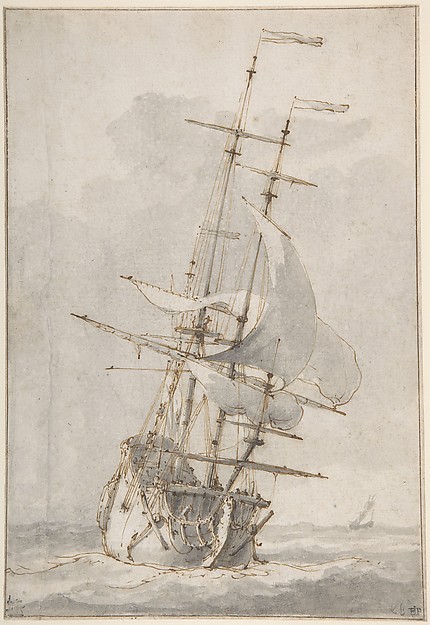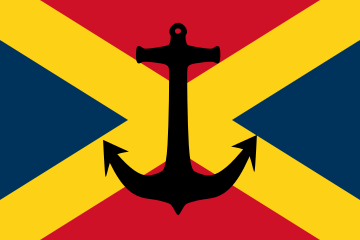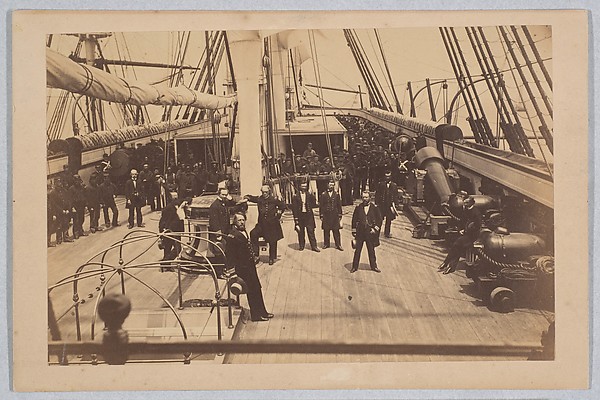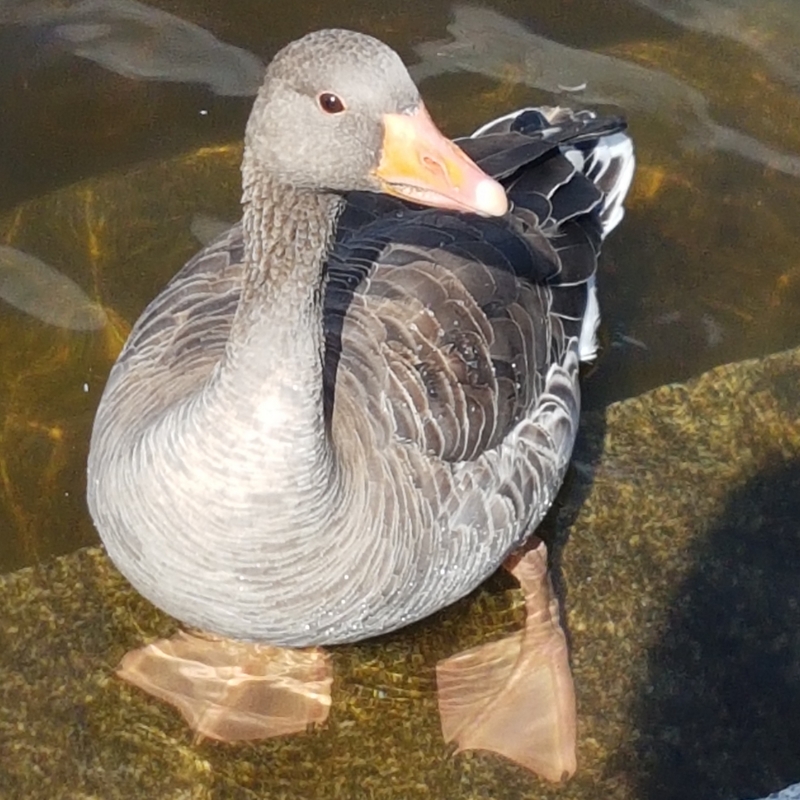Royal Navy
The Royal Navy is the largest branch of Astoria's military. While navies have existed throughout Astoria's history, the current navy was established by King Selemy II. Beginning in 4455, it rose to prominence as the strongest navy in the world. From 4892 to 5005, they were in a state of near constant warfare against Verona and Petrek. Under King Oswyn, the navy was reduced significantly with most of the ships being laid in ordinary. Since 4890, the navy expanded to include a fleet of airships, though the airship administration is more on equal footing with the rest of the navy than subordinate to it.
Their garrison is at Broadstead , a town north of Serisport. Ships built at the Serisport Dockyards must be sailed there to complete their outfitting. Most of the ships laid in ordinary are also kept there. The navy is also headquartered at the Admiralty Building in Serisport, and the admirals' flagships are anchored just offshore from the city. They have two representatives in Parliament , one for the airship fleet and another for the steamship fleets.
The navy's young gentlemen are the future of her success. However, that success is not based solely on the education of her officers but on the measure of her performance as a fighting machine. No captain can become great without the support of his crew and junior officers. Great captains are also great seaman and great leaders of men. To stand on the quarterdeck of one of His Majesty's ships is to represent the king and our great nation. The common sailor will look to you as the king, and it is vitally important that they respect you as a fair and just king than as a tyrant. A well disciplined and respectful crew make for a happy and efficient ship.Rear Admiral Keith
Structure
There are few things more tedious than the minutiae of naval administration. It is no wonder, therefore, that the navy created the rank of Purser to negotiate between the many different offices. Anywhere else, it would be considered ludicrous that a vessel in need of repairs must report to three different offices all of whom have differing agendas and schedules. Indeed, it may be considered one of the navy's greatest failings that a homebound ship may have to wait months to put out to sea again because the Armaments Office is short gunpowder while the Victualling Office has more food than ships that can receive it.
The Navy is divided into four fleets each led by an Admiral , Vice-Admiral, and Rear-Admiral. The home fleet admiral is in charge of the navy as a whole. Each ship is commanded by a captain followed by lieutenants , and a sailing master. Midshipmen are recruited by individual captains. Captains can be raised to commodore as needed to command squadrons.
On shore, a variety of offices manage the provisions and needs of the ships. The Armaments Office is in charge of weaponry, the Victualling Office manages supplies, food, and drink, the Chirgury Office runs the naval hospitals and verifies the appointments of surgeons, the Shipbuilding Office is in charge of building and ordering new ships, and the Navy Office oversees the other offices, manages the navy's finances, commissions officers, verifies warrants, and appoints representatives to Parliament.
The Aeronautics Office holds an unusual relationship with the Navy. While technically a subordinate office to the Navy Board, they have their own representative in Parliament and tend to operate separate from the rest of the navy. They manage their own construction, provisions, and weapons, though they send injured aeronauts to Navy hospitals. Command structure on an airship is similar to the navy with a captain, lieutenants, navigation officer, and midshipmen.
Flags and Colors
The Navy on shore uses a variation of the Astorian flag bearing a black anchor in the center. The five fleets fly a solid colored ensign with the Astorian flag in the canton. In addition to an ensign, all commissioned ships fly a red commissioning pennant which is forked at the end. Commodores fly a yellow pennant to indicate their status as a squadron leader, and flagships fly a blue pennant. The pennant is always flown from the mainmast.
Public Agenda
- Maintain coastal and aerial borders
- Protect trade ships
- Be ready to fight and defend Astoria's national interests by sea and by air
Assets
History

The Royal Navy was established in 3722 by King Selemy II. It started out humbly with only eight small ships to protect the waters around Serisport. When Osgood the Younger was coronated in 3731, one of his first acts as king was to begin a massive expansion of the navy. With a stronger navy, he was able to deter pirates and other navies from bothering Astorian merchant ships as they sailed along the eastern coast. In 3738, the fledgling navy was put to its first real test over the contested island of Crowmere near the border of Astoria and Verona. Despite being at a disadvantage in terms of firepower, the Astorian ships were faster and more maneuverable. They came out victorious and succeeded in capturing a Veronan cog. Bolstered by their newfound confidence, two larger ships were commissioned based off Veronan designs. The new ships proved their worth in the Siege of Fellsind in 3749 when they successfully blocked the city's port for six months.
In 4455, the Astorian fleet sank or captured most of Verona's ships during the Three Years' War. This decisive victory halted any further attempts by Verona to invade Astoria by sea. It also marked the end of Verona's naval superiority. Astoria's navy only grew further, and vast forests were felled to supply enough timber to build new ships.
The navy was also near the forefront of maritime technology and began ordering ironclad ships in 4842. The Battle of Durless in 4855 showed the world the superiority of ironclad ships against their wooden counterparts. In 4890, the navy expanded to include airships. While criticized by some for making the navy too powerful, the decision to create the airship fleet using navy resources was generally received as the only rational choice.
Between 4892 and 5005, Astoria fought in a series of wars against Verona, Petrek, and their allies. The long years of war meant that the navy was unable to find enough volunteers to man all the ships and soon pressured Parliament into allowing the navy to conscript people. It was met with immediate backlash, but the navy held firm insisting that conscription was necessary to keep Astoria's borders safe. This sparked a nationwide discussion about the role of women in the military. Traditionally, all ships were permitted a quota of women on board equal to the number of warrant officers plus the captain. A new proposed law would permit the conscription of women as sailors and midshipmen. However, the conservatives in Parliament rejected the proposal outright. The topic went back and forth until finally, in 4995, women were allowed to volunteer to join the navy, though their acceptance was at the captain's discretion. Only the airship fleet truly embraced having women on board as officers and engineers.
When King Oswyn took the throne, he began reducing the entire military including the navy. It was the largest reduction in size in history, and he abolished the navy's ability to conscript sailors. Except for the admirals' flagships, the home fleet was sent into ordinary. The rest of the fleet was relegated to patrols and escorts, and thousands of officers were stranded on shore. The reduction also put a massive strain on the nation's finances as ships en masse had to be paid off. This move led to an attempted coup led by Admiral Lord Jackson, Admiral Sawley, and General Wrayburn. The military split between the insurgents and the loyalists. The sailors and junior officers largely sided with the insurgents. In early 5011, the Royal Guard was sent to attack Broadstead which had become the base of operations for the insurgents. The city was bristling with ships' cannons and manned by experienced gun crews. The Royal Guard was forced to retreat under heavy cannon fire. Nine months later, King Oswyn sent an offer for negotiations, however, he arrested the three leaders as soon as they entered Serisport. Two months later, they were tried and hanged for treason and mutiny. A decree was issued to the rest of the insurgents that unless they permitted Broadstead to be placed under the Royal Guard's protection, they too would all be hanged as a traitors. Following King Owsyn's death in 5034, the garrison at Broadstead was recalled, and the city once again became the navy's center of control. Admiral Lord Palmer was forced to swear fealty to the new King Harold before having his appointment confirmed. The move left the relations between the king and admiralty sour, and they reluctantly remain in line.
Admiral John Sawley's participation in the Coup of 5010 offers some insight to betrayal felt by the military as a whole. Sawley was known as a staunch loyalist to King Harold III, and his victories at the Battle of Cape Padlowe and the Battle of Dolrin established him as a national hero. When he sided with the insurgents, public opinion shifted greatly in the insurgents' favor. However, he was extremely unpopular in Parliament, and his views against the nobility class were well-known. While it is unclear how Parliament would have responded if Sawley didn't join the insurgents, the fact that he did merely ensured Parliament's support of the king and the status quo. However, one must not forget that Sawley's role in leading the coup was quite small. General Wrayburn, an outspoken critic of the monarchy, was far more influential in organizing defenses and coordinating efforts between the insurgents.

Strength from the Sea
Home Fleet -- Red ensign
Northeastern Fleet -- Blue ensign
Northeastern Fleet -- Yellow ensign
Western Fleet -- White ensign
Airship Fleet -- Green ensign






"Rule Astoria, Astoria rules the waves! Astons never never ever shall be slaves!" Great work so far, navies are easily the most underappreciated part of fantasy, and I'm damn happy to see them being so well estabilished.
Thanks! I'm a huge navy nerd especially when it comes to historical navies. And yes, Astoria is loosely based off England without being an island.